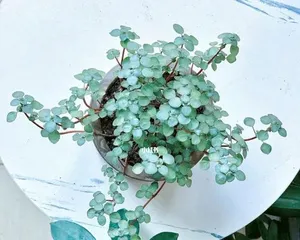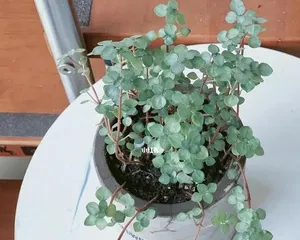As people's demand for green and environmentally friendly lifestyles increases, more and more people are starting to grow plants at home. Pilea, also known as the watermelon pilea, is a common indoor plant that is widely popular due to its beautiful appearance and strong adaptability. However, to help Pilea thrive at home, some care techniques need to be mastered. This article will introduce you in detail how to care for Pilea indoors.

I: Introduction to Pilea
Pilea originates from Africa and belongs to the Myrtaceae family. Its name comes from its growing environment - cool streams and waterfalls. Pilea has succulent stems and leaves, appearing light green. The leaves resemble ferns, have a glossy surface, and feature unique textures. Pilea flowers are bright and colorful, coming in white, yellow, pink, and other colors, emitting a fresh floral fragrance. It is a highly decorative indoor plant.
II: Pilea's Adaptation Environment
Pilea has strong adaptability and can grow in a relatively wide temperature range. Typically, the suitable indoor temperature range for growth is 18°C-25°C, with a minimum of 10°C. Additionally, Pilea requires high humidity and sufficient sunlight. When caring for Pilea at home, attention needs to be paid to controlling indoor humidity and lighting.

III: How to Choose Pilea
Selecting healthy Pilea is very important. When purchasing, we should choose straight and robust Pilea plants, checking if their leaf color is uniform, or if there are yellowing, spots, or other abnormalities. At the same time, we can also select open flowers to judge the quality.
IV: Watering and Fertilization
Pilea prefers a moist environment but cannot tolerate overwatering. It is recommended to check soil moisture before watering. If the soil surface is already dry, then perform appropriate watering. Meanwhile, spraying water on the soil surface can increase air humidity, which helps Pilea growth. During the growing season, Pilea needs proper fertilization. It is recommended to apply liquid fertilizer to the plant every 2-3 weeks, but avoid over-fertilization.
V: Light Management
Pilea needs sufficient sunlight to grow healthily. Indoors, it can be placed in a bright window position, ensuring 6-8 hours of sunlight exposure daily. If there is insufficient light, artificial light sources can be used to supplement.

VI: Maintaining Humidity
Pilea needs to maintain high humidity to grow normally. To increase humidity, we can use a hygrometer to monitor indoor humidity and perform appropriate humidification when needed. At the same time, a spray bottle can be used to mist the soil surface, or potted ferns can be placed around Pilea to help increase indoor humidity.
VII: Pruning Management
Pruning is an important part of Pilea care. Through pruning, plant growth can be promoted, shape improved, and plant health enhanced. The specific timing for pruning varies by variety, generally performed during the growing season or after flowering.
VIII: Pest and Disease Control
Pilea is susceptible to pests such as whiteflies and aphids, as well as diseases like gray mold and root rot. We can control these problems by spraying pesticides and adjusting temperature and humidity. At the same time, regular checks of plant health should be conducted to detect and address issues promptly.
IX: Choosing the Right Container
An appropriate pot provides a good growing environment for Pilea. It is recommended to choose breathable materials like ceramic or cement, while paying attention to the pot size being appropriate. Too large or too small pots will affect Pilea's growth.
X: How to Transplant Pilea
Transplanting is an essential step in plant growth. When transplanting, first remove Pilea from the old pot and clear away soil residues and dead roots from the roots. Then place it in the new pot, add new soil around the roots, gently compact it, and finally water appropriately.
XI: Pilea Propagation Methods
Pilea can be propagated by seeds, but this method is relatively difficult. Usually, we can use stem cuttings for propagation. Take healthy shoots in spring or autumn for cutting propagation, which typically takes 3-4 weeks to root.
XII: Common Problems and Solutions
Common problems include yellowing, curling, and wilting leaves, which may be related to improper watering, insufficient light, or pest/disease infestation. For different problems, corresponding measures need to be taken.
XIII: Companion Planting with Other Plants
Pilea can be paired with other green plants for good effects in home decoration. Selecting plants with similar or contrasting shapes and colors to Pilea can enhance decorative effects.
XIV: Application Value of Pilea
Besides being an indoor decorative plant, Pilea also has certain medicinal value. Its leaves contain various compounds with analgesic, antispasmodic, and blood pressure-lowering effects.
XV:
Pilea is a beautiful and practical indoor plant whose growth process requires us to master certain care techniques. Through the introduction in this article, we can better understand key points of Pilea's adaptation environment, light, watering, etc., providing assurance for the healthy growth of Pilea at home.
<|end_of_box|>